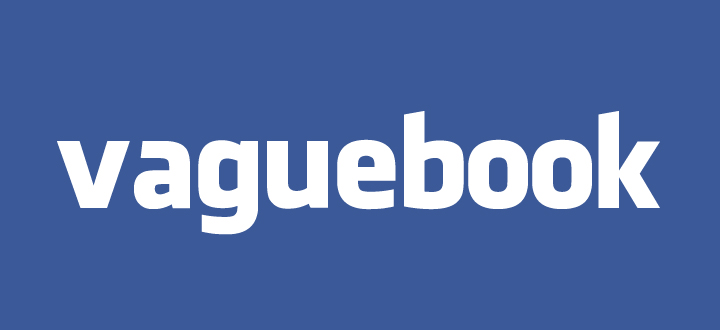By Payton Coon [Linkedin]
A – Authenticity is important because it builds trust for the consumer. If a brand’s voice, imagery, tone, and themes are consistent, you will come off as authentic. Real authenticity comes when the brand’s purpose is defined and carried out through all daily business activities.
B – B Corp
C – Courage. Being a courageous brand means stepping out and campaigning for change. Knowing that some people will probably be against you but doing it anyway. Being courageous is putting the brand’s purpose before profit and standing for what you believe in.
D – Diversity. It is important to have a variety of perspectives within an organization. Whether it’s race, gender, income, background, or ability, diversity is key to making sure any one group of people isn’t left out or disregarded.
E – Empathy. Brand responsibility is all about empathy. Consumers want to connect with a brand on a personal level. By being compassionate, genuine, and transparent, a brand can resonate with its audience on an individual level.

F – Fast Fashion is one of the least sustainable industries. Producing clothing so quickly increases waste, dyes, electricity, and many other things. Today, thankfully, there are many alternatives such as upcycled apparel that can be opted for. They might even be a little more affordable. If possible, try shopping second-hand; mending clothes instead of throwing them out; or buying from sustainable clothing brands.
G – Greenwashing
H – Heider’s Balance Theory is a tool used to figure out if a brand aligns with a person/event/social issue. All three points need to be balanced to work.
I – Impact. When you are given a megaphone, do something positive with it. Brands have huge platforms and the ability to make an impact on their local community and the world around them.
J – Ben & Jerry’s has become the poster child of brand responsibility. Take a peek at their website to see why.
K – Key Stakeholders. It is important to take into consideration all your stakeholders along with shareholders. Stakeholders are anyone who will be impacted by your business decisions, whether it be consumers, community members, the c-suite, or lower-level employees.
L – Long-term. Brands that focus on long-term value are slower to grow at the beginning, but that doesn’t mean they aren’t a high-growth company. It just takes a little more time. Being a responsible brand takes a long-term outlook.
M – Mission Statement. Every company should have a mission statement. It’s a short statement of why the organization exists. A responsible brand’s mission is about more than just making a profit. It stands for something.
N – Now is the time to make these changes. It’s more important than ever for brands to be responsible.
O – The Overton Window is a tool that puts all the social issues of the time on a continuum and ranks them by how acceptable they are to discuss in public. Responsible brands take radical ideas and use their platform to bring them into the conversation.
P – Purpose Driven. Bring purpose-driven means that a brand’s purpose is the core of its identity. They operate on all levels of business with their purpose in mind first and profit comes secondary.
Q – Asking Questions. There are many questionaries that can help you answer the question: is this brand responsible?
R – Resilience. Resilient brands can adapt, problem solve, and respond to unexpected changes. Many brands were tested during the pandemic, but the resilient ones adapted and thrived.
S – Sustainability

T – Transparency
V – Values. Brand Values are the core things that a company stands for and believes in. They act as guiding moral principles and they should dictate a brand’s identity, personality, and messaging.
W – Workplace Culture. It is part of a brand’s responsibility to make sure everyone in feels safe and valued in their workspace.
X – Cross(x)-cultural. Every market contains different cultural or ethnic groups. When making a campaign make sure that you are not disregarding any groups of people. It is important to note that this doesn’t necessarily mean skin color, but cross-cultural beliefs and values as well.
Y – You. What can YOU do? As a consumer, purchasing from and supporting responsible brands will send the message that our expectations have shifted. We expect all brands to be transparent, responsible, and authentic.
Z – Gen Z. Research shows that Gen Z is redefining brand expectations. Their preferences include transparency, trust, and brand responsibility. Gen Zers value brands that hold opinions and take bold stances on certain key issues.




Payton, this was such a creative and effective way to share keywords words surrounding brand responsibility. I feel informed but not overwhelmed with too many words. I liked that you added examples and links with some of the letters to give readers an idea of how companies are upholding their brand responsibility.
Payton,
This is so creative! I love that you took the overarching topic of BR and made it into something that is easily digestible for virtually anyone to understand (including those who are far removed from the world of advertising or marketing). It is a piece like this that will propel the study of brand responsibility and ethical business practices forward in the upcoming years.
I throughly enjoyed reading your post and learning more about topics through the attached links. You made everything super accessible and compiling a guide for brand responsibility this way is so smart and creative. I’ll definitely be referencing/revisiting your post in the near future!
Peyton,
This is such a unique and visually pleasing way to do an informational blog post! I really love that you included links to websites that explain certain definitions in detail. You conveyed your message in a very simple and easy-to-read way while making it fun and interesting to read. I genuinely feel like I took away helpful information from this post and enjoyed reading it with the format you wrote in.
Payton, this is so creative! I love the way you broke it down into ABC’s. It made it way easier to understand and read.
I love this idea, Payton! You share some really great points and resources here. Thank you for sharing!
Payton, this was so much fun to read and I love that this is the formatting you chose to use. It was fun, interesting and I’m amazed you came up with something for the letter X! Nice job.
Hi Payton!
I think this idea is such a creative way of educating young audiences about brand responsibility and all of the layers that go into it. The ABC method was easy to follow and provided the necessary information. Great work!
Hey Payton,
This was a brilliant way to break down such a huge topic. With so many ways to learn about brand responsibility, I think breaking it down into ABC’s is a great way to make these topics digestible. I hope brands see this and use your examples like Ben and Jerry’s to learn more!